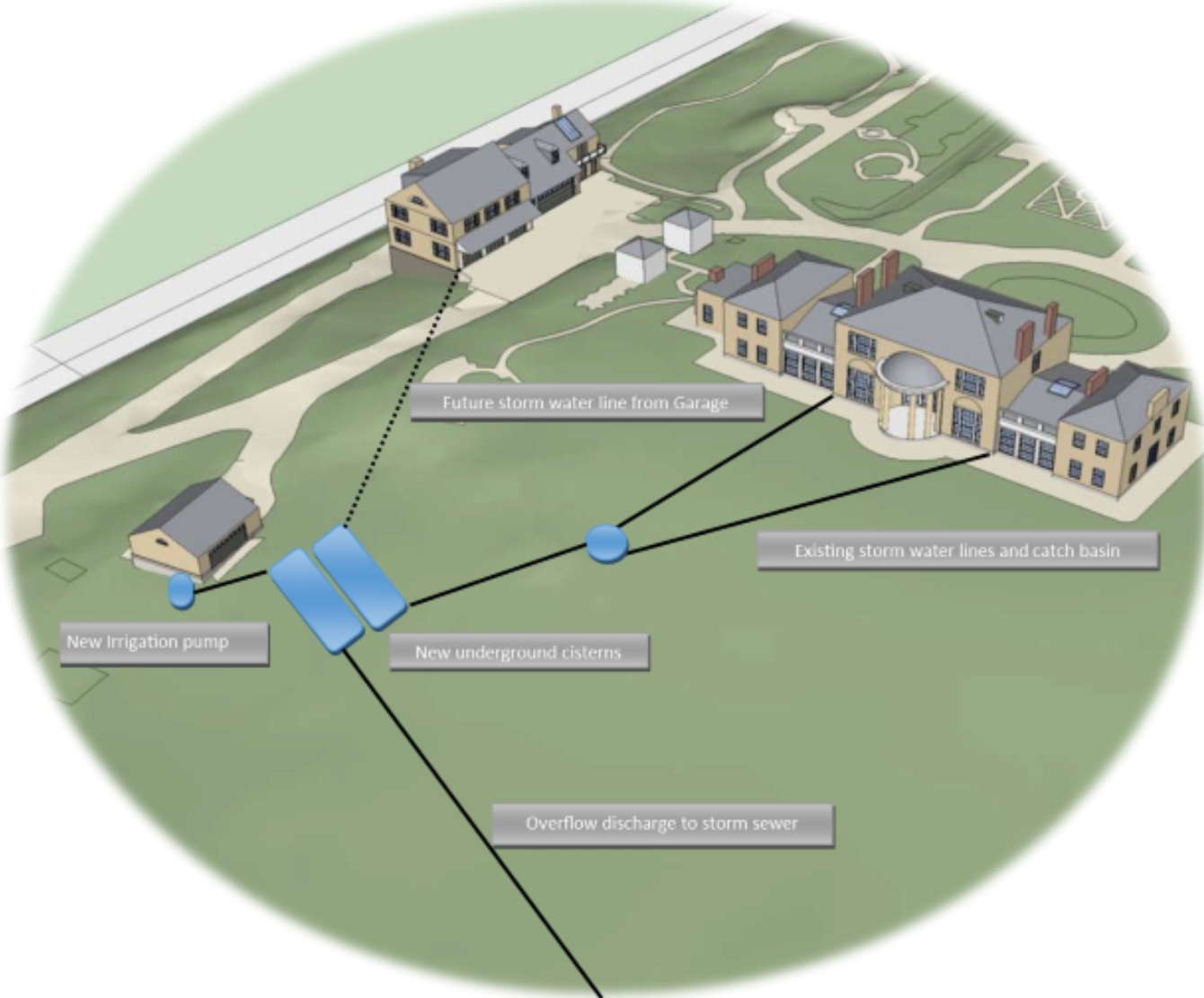South Lawn Cistern Project

Tudor Place, in pursuing sustainability and responsible stewardship of the historic house and grounds, is currently working to actively conserve water and regulate the stormwater flow on and from our site.
The stormwater management project, starting in February 2019 on the South Lawn, will reduce silt and water runoff, mitigate destructive erosion, and diminish our consumption of fresh water.
In collaboration with our architect, civil engineer, preservation consultant, and other experts, we designed a system that will meet our needs and our sustainable practice standards. Two underground cisterns will be fed by existing stormwater lines that gather rainwater from the Main House downspouts and gutters. These two cisterns can hold nearly 20,000 gallons of water, which we will use for irrigation after a short treatment process. Altogether, this project will involve excavating and placing the cisterns, installing the irrigation pump and water treatment system, and connecting the irrigation lines to the new water supply.
This project is a component of our Master Preservation Plan, developed in collaboration with stakeholders to reach the goal of enhancing Tudor Place’s interpretive capabilities while advancing the site’s overall sustainability. Other sustainability initiatives include implementing LED lighting throughout the property, and building an HVAC system based on geothermal energy.







